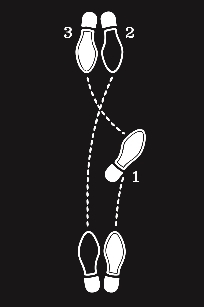One step back, two steps forward?
NHS Improvement’s announcement of a further delay to the publication of the tariff engagement document in August was a blow for local health economies keen to understand the opportunities and financial challenges they will face in 2019/20. But there are also encouraging signs that the NHS is starting to make some progress towards reformed payment systems.
The August announcement said tariff proposals for 2019/20 would now be published alongside the wider 10-year plan later this year. This was already two months beyond the original planned release date. Having extolled the virtues of stability and enhanced planning delivered by the current two-year tariff, delaying plans for the next tariff seems counterintuitive.The tariff proposals are not an academic exercise, with possible proposals that could make a big difference to how money flows and have an impact on health bodies’ ability to meet control totals. Decisions must be made about the specific version of the currency design used – what year’s reference costs would tariff prices be based on?
And with reform of outpatients a key priority currently, it would not be too much of a stretch to anticipate changes around the funding of first and follow-up appointments.
Any changes to the marginal rate emergency tariff would also have a massive impact on many providers.
And if there are to be any new best practice tariffs introduced, as much notice as possible would be helpful in ensuring data flows and processes are in place to support their achievement.
But clearly the new five-year settlement is a game changer in terms of the overall quantum of funding that will be delivered via the tariff and other payment mechanisms. And there is sense in ensuring alignment between what the 10-year plan aims to deliver and how one of the key payment mechanisms helps to achieve that.
There is also a sense of greater urgency in messages from NHS England and NHS Improvement about payment reform. Speaking to Healthcare Finance, NHS Improvement’s chief financial officer Elizabeth O’Mahony is clear that while the tariff has it place, further reform of the payment system is needed – building on some of the local approaches to support integrated working.
The summer’s publication of the proposed contracting arrangements for integrated care providers – now being consulted on – also shows the direction of travel towards the use of integrated budgets. It is clear in identifying capitated payment – or a simplified version of it using whole population budgets – as the way to support moves to integrated care.
These proposals – initially setting the budget based on current commissioner spend, top-slicing an element to provide an outcome-based incentive scheme and developing gain/loss sharing mechanisms to share risk – are not new. They are built on earlier published guidance. But while the whole ACO contract has been caught up in judicial reviews, debate on reforming payment approaches has also been relatively stifled.
Payment reform will not deliver the transformation that the NHS needs to see. But there are real examples now of transformed services – delivering patient and system-wide cost benefits – not being further rolled out because of payment system difficulties.
The delay to the 2019/20 tariff engagement document may produce headaches for local finance managers trying to navigate next year’s financial challenge. But if it means that we will see faster moves to a more appropriate payment system to support modernisation, it will be a price worth paying.Related content
We are excited to bring you a fun packed Eastern Branch Conference in 2025 over three days.
This event is for those that will benefit from an overview of costing in the NHS or those new to costing and will cover why we cost and the processes.